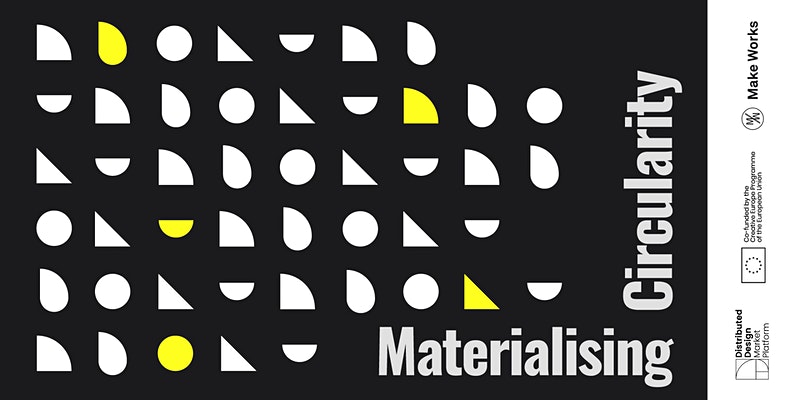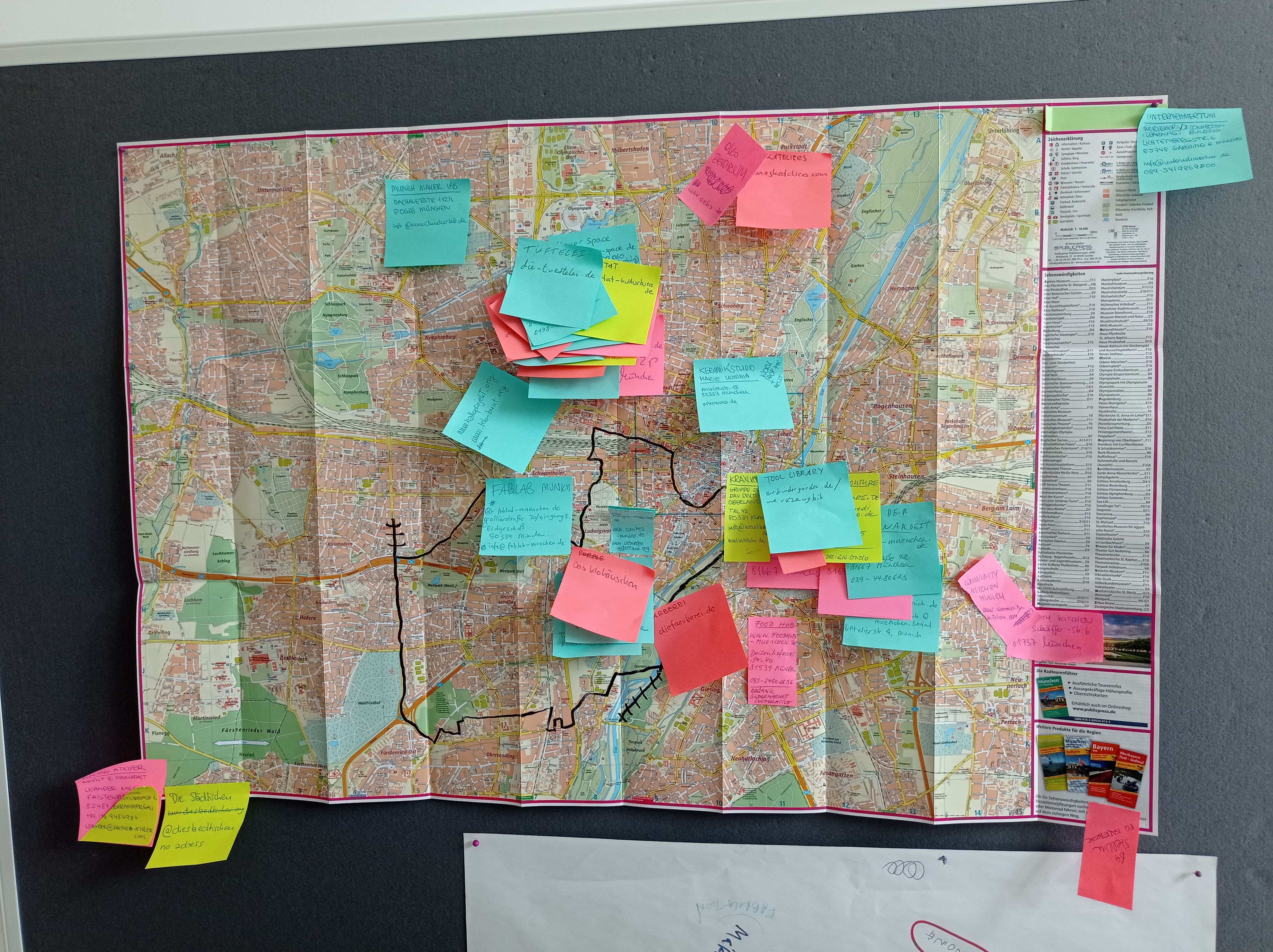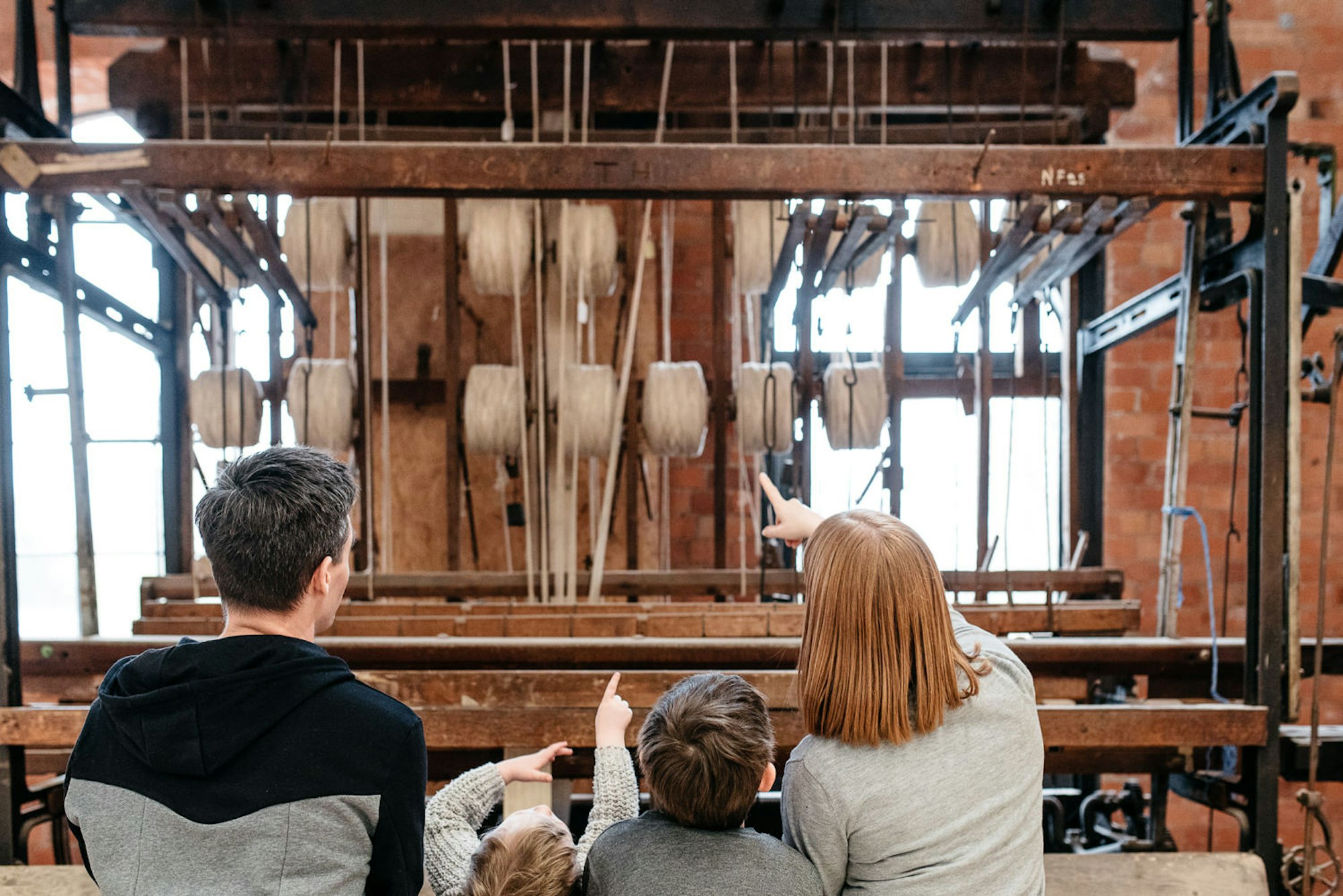Materialising Circularity

Prompted by insights from the Make Works Scotland making and manufacturing community, we started a discussion about the circular economy and what it means in real terms at the Materialising Circularity event in June 2021.
We’re always cautious about picking up buzzwords and particularly when it comes to any form of greenwashing. So, we wanted to explore tangible businesses and examples within our community, and provide overviews of some valuable research that has been undertaken recently. All this in order to help us think more clearly about the steps we and other Make Works regions can take to increase our support for manufacturers, factories, makers and workshops to become circular.
Hosted by Helen Voce and Kaye Symington of Make Works Scotland / Paved With Gold, we invited a selection of speakers to share their learnings.
- Kalopsia Collective and Edinburgh Tool Library, both social enterprises, provided really concise examples of how circular practices and sustainability have been part of their vision from the beginning. Continued learning, adaptation and refinement of the way they practice ensures circular principles are at the heart of what they do.
- From their research, Caro Overy from Creative Carbon Scotland and Nat Hunter from Other.Today shared practical tips into how to adopt practices and approaches into your own business.
There’s a whole load of information in this article. We’ve distilled down the huge learnings we took away from our event with these brilliant people, to the following which you’ll find below:
- Important tips from Kalopsia Collective
- Shared learnings from Edinburgh Tool Library
- Caro’s research and learnings to date to support creatives to take action from the evidence of the environmental impact of their practice
- Nat’s highlighted findings from the Design Council's Beyond Net Zero, A Systemic Design Approach, evidencing people in the design world are creating big systemic change
- Resources for further thinking and reading

Based in Leith, Kalopsia Collective are a batch textile product manufacturer supplying clients with ethical and sustainable accessories and apparel from their standardised product collection Assemble. Starting in 2012 as a textile and design collective, they are now an award winning manufacturer. They recently participated in the RSA / Ellen MacArthur Foundation's Rethink Fashion: A Learning Journey.
Kalopsia shared with us how they built the circular model into their working practice from the beginning. That having a frugal mentality and a lack of resources really helped them to ensure that everything they do is as sustainable as possible. Initially it was really hard for them to get any traction but their proof of concept after so many years of shouting into the void has attracted the interest of funders and policy makers.
Adam Robertson and Nina Falk from Kalopsia shared their important tips:
- Openness - We ensure accessible information is available to clients around our services, available products and processes which helps to ensure we become a preferred manufacturer. How we talk about what we do and why we do it enables our clients to understand that whilst our services are probably more expensive they are better for the environment and therefore relevant to what they want to achieve. This informs their decision to work with us, and we believe our high client return rate is due the way the model runs and the trust we develop.
-
Ecosystem of good practice - We want to support others by sharing our learnings of working within the circular economy: about how we use resources and help other clients, designers and brands to become more sustainable; take some of the innovations we’re seeing from small businesses like us and really scale them up into bigger projects.
-
We’ve made a career out of ignoring things - When we started out, we put pricing on our website and started using social media, which everyone said manufacturers just don’t do. Making a decision that not everyone in your industry is making doesn’t mean it is a bad one, it just means they’ve not realised that it’s the right thing to do yet. You’ve got to take a gamble on it.
- Local is important - This is especially so for our social goals. However, the Scottish market alone is not enough to sustain our business, so continued assessment of carbon emissions from responsibly shipping our products internationally is key to our understanding that this is negligible and less of a barrier to our being sustainable than we expected. This means we are informed and in control of our global practice and can continue to be ethical and environmentally conscious in how we operate.

Edinburgh Tool Library lends and shares tools like a library, but instead of books, it’s equipment and knowledge to help people mend and make. It’s a community resource, providing workshops and educating local people. To date, the tool library estimate they’ve saved their members about £1.3 - £1.4 million through borrowing tools instead of buying, however, they’ve yet to calculate what the reduction in carbon footprint is. In 2019 they did record saving members £350,000, and reducing a collective carbon footprint by about 52 tonnes. So, they are currently developing a carbon saving calculator which can draw on existing data, and allow their members to understand the carbon footprint reduction they make by sharing tools instead of buying.
Chris Hellawell, Founder and Director of Edinburgh Tool Library, shared learnings so far:
-
Sharing - In the Ellen MacArthur Foundation’s circular economy ‘butterfly diagram’, we sit in the most resource efficient loop of that due to our sharing model; removing the need for tools to be manufactured for people who don’t need them everyday and therefore don’t need to own and maintain them.
- Unlearning - We want people to unlearn their predisposed ideas about value, and encourage them to value access and not excess; what can you get your hands on rather than what you own.
-
Data - We use an inventory service called myturn to manage tool loans, so we already have a lot of data about what tools people are borrowing, how long for, and their condition. It wasn’t much of a stretch to incorporate a carbon calculation to determine a saving resulting from sharing into the platform, and myturn agreed with us! In addition, the analysis of data, is helping us to know when we are busy, when things need repair, tool loan patterns and trends, and therefore predict activity and make our day to day operations easier.
-
Share what you know - What started out as being something to benefit us will become something that can support the 90% of 300-400 tool libraries globally who use the myturn platform. At a click of a button, the carbon footprint savings of all those libraries could be viewed, which could be 10s of 1,000s of tonnes. Each library will be able to access a calculation of their total carbon footprint reduction as a result of sharing, and via a receipt issued on return of loaned items, individual members will see how much money they’ve saved and carbon footprint reduction they’ve made by borrowing instead of buying.
-
Be part of the conversation - People join the tool library for lots of different reasons. For some it is because of their passion about sustainability and the environment. About a third of our members are on benefits / over 65 / in full time education, so have financial challenges. Those people are traditionally excluded from conversations about circularity and the environment, so we felt it was important to ensure those who are borrowing out of financial necessity are aware that their actions are having an environmental impact too.
- Repair and reuse - We used to just replace broken tools as we had enough ‘in stock’ to do so. Now, we’ve built up our specialist volunteer repair team, which alongside the myturn development, means we can have an inventory of and track tool parts. So if we can’t repair something, we can create spare parts, not only for us but for other libraries. To encourage reuse, we’d love to see reward mechanisms, such as council tax discounts, for people who are recycling the right things in the right ways locally.

Caro works for Creative Carbon Scotland supporting cultural organisations with their carbon management. Her recent development project Climate Friendly Culture, supported by Creative Informatics’ Connected Innovators fund, supports those in the cultural sector to take action from evidence of the environmental impact of their practice.
Caro shared her research, learnings to date and hinted at future plans. Firstly, this included analysis of a 5+ year data set of carbon emission reporting by Creative Scotland’s Regularly Funded Organisations. From this she was able to demonstrate a general trend in the gradual reduction of carbon emissions from energy, travel and waste; waste being the smallest part of an organisation’s carbon footprint and energy the largest with reductions attributed to shifts to renewable energy suppliers. Travel, which includes transport and freight, has shown a reduction over time, however it persists as a stubborn and prominent part of an organisation’s carbon footprint. Interestingly, artform doesn’t seem to influence an organisation’s carbon footprint.
Secondly, from Caro’s survey and case studies of creative practitioners and green champions at organisations, she observed:
-
Carbon literacy - When asked to order activities thought to be the highest and lowest in terms of carbon impact, people demonstrated a good awareness of the extremes but a haziness in the middle.
-
Evidence supports practice - Helping people to evidence their carbon footprint enables them to do the right thing when it comes to practice and management, which is particularly useful for replicable processes or activities relevant to design and making practices.
-
Collaboration - Mapping carbon footprints presents opportunities for action, collaboration and connection, which is what the cultural sector and creative industries thrive on.
-
Visual mapping - Encouraging people to visually map their carbon footprint before calculating it, can identify opportunities for action and collaboration to make changes in production and supply chains. Visual mapping helps identify emission sources, whether they can be measured, and if you do or don’t have control / influence over them.
- Climate justice and climate adaptation - Carbon management in the cultural sector and creative industries ecosystem is about more than carbon efficiency. Climate justice takes into account the people working in, for and across organisations in the sector - e.g. freelancers, technicians, producers and audiences. Climate adaptation is required as climate change is already happening, even in Scotland, to not only withstand extreme circumstances but also understand that we may not be able to predict those extreme circumstances.

Nat Hunter is a designer, educator and coach. As co-director of Design at the RSA she co-founded The Great Recovery, a pioneering project that created a framework for designers to understand how to design for a circular economy. She is a member of the Fab City Collective and Distributed Design, developing new manufacturing possibilities, alternative business models and design practices for ambitious and hopeful futures.
Nat discussed the findings of the Design Council's Beyond Net Zero, A Systemic Design Approach report, which she co-authored. She highlighted findings unrecognisable from a few years ago with people in the design world, including the built environment and product design, creating big systemic change:
- Barriers - Whilst design is effecting big systemic change, barriers to make things happen are apparent, which include differences in language and narrative when working with others (e.g. small businesses working with local government) and difficulty turning knowledge into action across a team.
-
Qualities to make change - Who do we need to be to make change? The qualities to make continued change identified at the workshop were tenacity, ignoring advice and passion. The report’s findings realised a pattern of qualities in people:
- System Thinker - someone who can think about the micro of data and the bigger picture
- Designer and Maker - someone who can make and think with their hands
- Connector and Convenor - someone who is connected and will work with and connect people they know and don’t know from across different organisations, scales, roles, etc. within a system and get them to listen
- Leadership - someone who can lead, tell engaging stories about important and relevant issues
- Double Diamond - In response to the qualities identified in people to make change and with the aim of thinking about how we can live in a different way, the Design Council’s Double Diamond has been expanded upon in a proposed six step systemic design framework. Importantly, it includes ‘orientation and vision setting’ at the outset of the design process to assist with leadership of self and others to that vision, connecting and building relationships, encouragement to think bigger and design beyond existing systems and paradigms.
-
Imaginative thinking - To think big and beyond what already exists, Nat encouraged designers to consider big picture questions in their design process:
- ‘What world are we designing for?’
- ‘Are we firefighting today’s problems or are we creating a new hopeful vision?’
- ‘If it got to 2050 and you were part of creating the world that your heart (not your brain) really wanted, what would that look like?’

Resources in Scotland
Support, including organisations, tools, networks and services:
- Circular Glasgow
- Circular Edinburgh
- Circular Tayside
- Circular North East
- Creative Carbon Scotland
- Ellen MacArthur Foundation
- Zero Waste Scotland
- Scottish Institute for Remanufacturing
- Applied Arts Scotland’s Closing The Loop research group
- Fife Contemporary’s Artists Environmental Resource
- Matalog Global Material Library
- Flourishing Enterprise Innovation Toolkit
- WRAP, Waste And Resources Action Group
- B Corp Climate Collective, B Climate Tools Base
- Great Recovery, RSA, 2012-2016
Policy:
- Making Things Last, A Circular Economy Strategy for Scotland, Scottish Government, 2016
Reading list:
- From What If To What Next: Unleashing the power of imagination to create the future we want, Rob Hopkins, Chelsea Green Publishing, 2020
- Mission Economy: A moonshot guide to managing capitalism, Mariana Mazzucato, Penguin, 2021
- The 7 Habits of Highly Effective People, Stephen Covey, Simon & Schuster, 1989
- Small is Beautiful: a study of economics as if people mattered, EF Schumacher, Blond & Briggs, 1973
- Crafting a Circular Economy: Exploring opportunities for designer-makers, Dr Lauren England and Julian Leedham, 2020
WORDS
Helen VoceOctober 12, 2021
Categories
Article
Related stories
Why Make Work Locally
Alan Moore and Ten30 Fashion
Tips for Manufacturing in Scotland
A Life in Lace
In the Belly of the Beast: my one year manufacturing for Coca Cola




